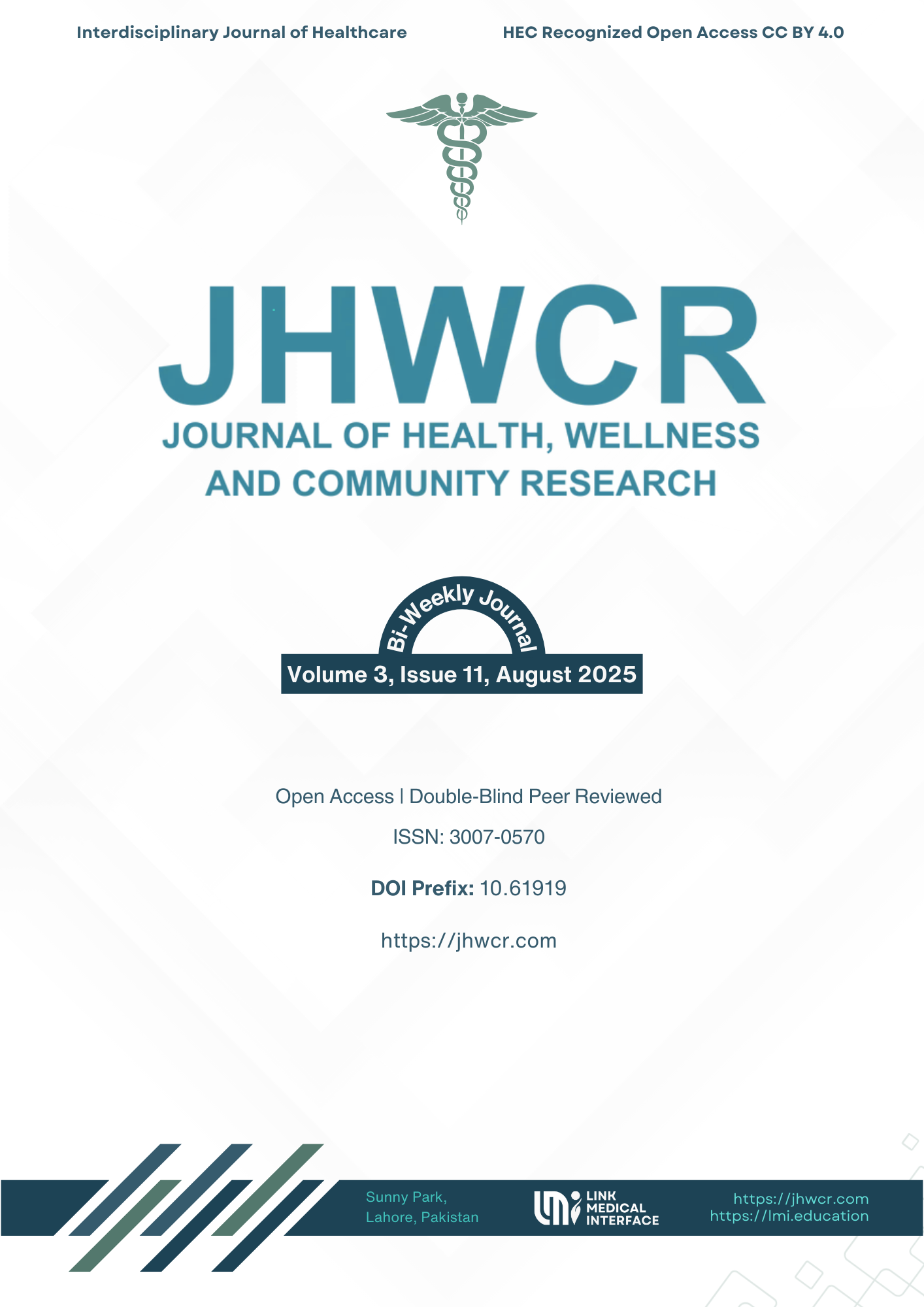Comparison of Level of Neurasthenia among Clinical and Academic Physical Therapists in Faisalabad
DOI:
https://doi.org/10.61919/sp0f7921Keywords:
Neurasthenia, Fatigue, Multidimensional Fatigue Inventory, Physiotherapists, Occupational health, BurnAbstract
Background: Neurasthenia, characterized by persistent fatigue, reduced motivation, and impaired concentration, has re-emerged in occupational health research as a parallel construct to burnout and chronic fatigue syndromes. Physical therapists are particularly vulnerable due to the dual burden of clinical demands and academic responsibilities. Despite global evidence on healthcare burnout, limited research has compared neurasthenia across clinical and academic physiotherapy settings, especially in South Asia. Objective: To compare the severity of neurasthenia between clinical and academic physical therapists in Faisalabad and to assess the influence of demographic and occupational factors on fatigue levels. Methods: A cross-sectional survey was conducted among 100 physical therapists (58% female, 42% male) employed in clinical and academic institutions. Participants with at least one year of professional experience were recruited purposively. Neurasthenia was assessed using the validated Multidimensional Fatigue Inventory (MFI-20). Data were analyzed using independent samples t-tests, with subgroup analyses by gender. Significance was set at p < 0.05. Results: Most participants reported moderate (59%) or high (38%) levels of neurasthenia. Clinical therapists had higher mean scores (57.8 ± 8.4) compared with academic therapists (55.3 ± 8.4), but the difference was not statistically significant (p = 0.132). Female therapists showed higher scores than males, though without significance. Conclusion: Neurasthenia is highly prevalent among both clinical and academic physiotherapists, with comparable severity across settings. Interventions addressing occupational fatigue should target the profession broadly, with attention to gender-sensitive support strategies.
Downloads
Published
Issue
Section
License
Copyright (c) 2025 Abesha Shahid, Amna Zahid, Abeera Maqsood, Asra Ahmad, Kinza Ehsan, Shahid Ahmad Heera (Author)

This work is licensed under a Creative Commons Attribution 4.0 International License.


